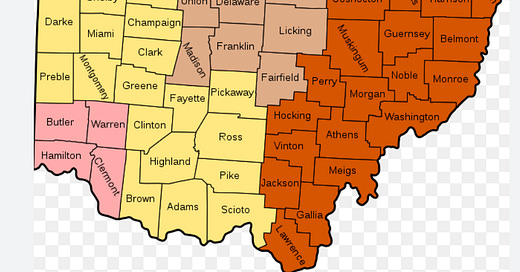Law professor speculates on Ohio prospects for Democratic Party
Political history of state shows voters tend to skew Republican
Ohio’s Supreme Court races this Fall could determine the direction of abortion jurisprudence in the state.
Liberals will try to hold on to two current Democratic seats while trying to gain another. They would have a 4-3 majority if they win all those races. Both anti-abortion and abortion rights activists have said the election will determine how the court interprets the recently passed amendment that enshrined abortion access in the state constitution. Jonathan Entin, a Case Western Reserve University law professor, spoke to me about how Ohio politics will likely work this year.
“I don't know how important (abortion) is going to play explicitly in the race,” Entin said. “But it's clear that that's going to be an important piece of the subtext of the campaign.”
Democratic Supreme Court Justice Michael Donnelly is up for reelection against Republican Megan Shanahan. The other incumbent up for election is Democrat Melody Stewart, who will go against Republican Justice Joseph Deters. Eighth District Court of Appeals Judge Lisa Forbes won this party’s nomination this week and will take on Republican Dan Hawkins.
In 2023, Ohio voters passed a constitutional amendment that activists had canvassed for a year. Its success had many Democratic operatives and leaders more optimistic about possibly winning the state in the 2024 presidential contest. Entin is skeptical of that.
Entin said that Trump has carried Ohio twice by wide margins. Insofar as the Supreme Court races, it wasn’t until 2022 that the judge’s political party was included on the ballot. Before that, it had been predominantly a Republican bench.
“I cannot imagine that Ohio is in play,” Entin said.
I asked Entin what he felt Democrats could do to make their brand appeal more to the state’s voters. He didn’t have an answer. The state went for Obama twice, but Entin and I both think that may have had more to do with the strength of that individual candidate than it did with partisanship.
U.S. Sen. Sherrod Brown, a Democrat, has won several races in the state, but he’s facing his toughest test. Otherwise, virtually every major statewide office has gone Republican in the last few decades. The state legislature is disproportionately Republican, and the districts are gerrymandered.
The ballot initiative's results again show the Ohio electorate's complexity. But Entin is still skeptical of the likelihood that Democrats could win the state supreme court.
“I don't think that reflects how the general election is going to go for president, senator, or Supreme Court,” Entin said. I don't. I'm not predicting that the Republicans are going to sweep all three seats, but I wouldn't be surprised.”




